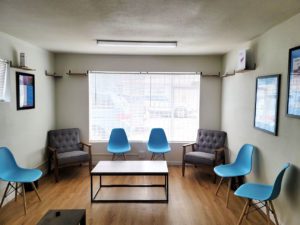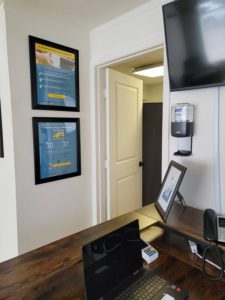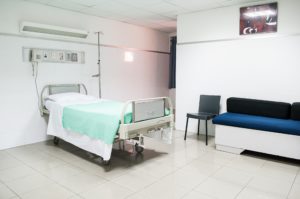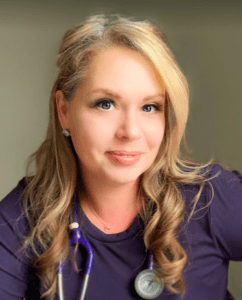
My Virtual Physician has an exciting announcement to celebrate: our hybrid clinic on Paradise Road is now open in Las Vegas!
My Virtual Physician’s mission is to provide safe, secure, and convenient access to healthcare for men, women, and children. In other words, we use telemedicine to fill the healthcare access gap that’s left by the reality that many doctors don’t offer same-day services. Patients who need to see a doctor now have the ability to meet virtually with our team of physicians with same-day appointments.
Our online telemedicine services launched during the pandemic, have grown exponentially, and continue strong today—providing quality healthcare access nationwide, online. We credit our growing team of doctors for our success.
But My Virtual Physician aims higher than simply providing online access to those who have the right equipment for a virtual visit (such as a smartphone or computer equipped with a camera and mic).
Other limitations exist with providing this type of healthcare solely online, including not having a private or safe place to interact virtually and the lack of medical equipment for taking vitals and collecting labs for diagnostics.
To overcome this challenge, My Virtual Physician opened its first one-of-a-kind hybrid clinic in Las Vegas. We’re excited to announce that, despite some major obstacles, we have successfully launched our first physical walk-in location.
Related: Hybrid Medical Clinics: Expanding OBGYN Access in Las Vegas
My Virtual Physician’s hybrid medical clinic is now open at 2217 Paradise Road in Las Vegas. Walk-ins are welcome. Find out our current hours or book an appointment (if preferred) here.
We are pleased to welcome men, women, and children into the physical clinic for a virtual visit in our private patient room, where our videoconferencing equipment is already set up and ready to go. We provide women’s health, pediatric, and primary care services in our hybrid clinic.
My Virtual Physician is proud to have opened the first clinic in Vegas that offers immediate access to online healthcare for those who may not have access to the equipment or private space. We welcome all to come visit us. Find us on Paradise Road! Get Directions Here.
Related: Now Available: Walk-in STD Testing in Las Vegas at Hybrid Clinic
 Inside Our Las Vegas Hybrid Clinic
Inside Our Las Vegas Hybrid ClinicTake a peek inside our clinic, where our certified medical assistant (CMA) will greet you! We have a comfortable waiting room for busier times. We also have a private room for patient use where our CMA will take your vitals, give you the tools to collect samples if needed for labs, and then you can meet virtually with our doctors with our private and secure videoconferencing setup.
At times, we do staff the clinic with a nurse manager and other medical professionals who can provide additional services such as wound care, vaccinations, ultrasounds, and more. If you’re interested in these services, please call ahead to (888) 224-0804 so that we can make sure the appropriate staff is present for your visit.
My Virtual Physician offers affordable and immediate access to patients at our new hybrid clinic in Las Vegas. Click to find out more about which services we offer. Welcome to our clinic!
The saying goes, “time heals all wounds.” Unfortunately, this isn’t always the case. Chronic wounds might go on for weeks or months. In many cases, you may not recover without medical treatment.

A non-healing or chronic wound is a skin injury that does not follow the normal healing course. Most wounds close within 7–14 days. You may need wound care if you have a cut, ulcer, or open wound that doesn’t heal. Prolonged wounds, if left untreated, may lead to severe complications.
Non-healing, or chronic, wounds show unique signs, including:
The most common reasons why wounds don't heal include:
You may benefit from telemedicine wound care if you have a non-healing or chronic wound. Telemedicine uses online doctor consultations or virtual visits. Globally, 75 percent of people will have utilized telemedicine services in 2021.
“Tele” means “at or over a distance. “So, the term “telemedicine” (TM) refers to the practice of medicine using technology to diagnose and deliver treatment to patients over long distances.
TM is a new and rapidly developing field. Wound healing and wound management are excellent examples of how TM wound care improves care.
In telemedicine wound care, a medical professional, usually a doctor, will perform an interview and a visual examination through a video visit.
The physician may also converse with and respond to inquiries from the patient and their caregiver through secure real-time video. The nurse in the immediate vicinity will apply treatments as directed by the expert.
There are many reasons individuals may not be able to see a doctor for a non-healing wound. Reasons that some patients are choosing telemedicine wound care include:
With the help of the internet and smart devices like mobile phones and tablets, telemedicine (TM) has become feasible to manage chronic wounds better.
Virtual wound care involves online care of your wound. It may help you recover faster. Virtual wound care is becoming increasingly popular because it offers many advantages over in-person visits.
Virtual wound care is a convenient way to get the care you need without leaving home. There are many benefits to using telemedicine wound care, including convenience, better assessment, and time savings.
Here are some of the reasons to consider telemedicine for wounds.
All these advantages can help improve the quality of care for wound patients. Telemedicine can also help reduce costs, improve access to care, promote collaboration between clinicians, and improve patient education.
Chronic wounds can take a long time to heal, requiring regular monitoring and many follow-ups. That’s why telemedicine has become an excellent option for patients who need wound care for non-healing wounds. Telemedicine helps patients receive faster wound treatment recommendations from the telemedicine wound doctor; thus, there is quicker wound healing.
Talk with one of our expert doctors if you want to learn more about virtual services or wound care without walls. My Virtual Physician offers video consultations for non-healing wounds.
Contact us today to find out how you can book a wound consultation appointment.
Disclaimer: The contents of this article are for informational purposes only and do not constitute medical advice. The information, graphics, and images on this site are not intended to substitute diagnosis or treatment by a medical professional. Always seek the advice of a licensed physician for any questions you may have regarding a specific condition.
"Telehealth in Wound Care - Evidence and Best Practices". woundreference.com. Accessed July 25, 2022.
"Wound Center Without Walls". ncbi.nlm.nih.gov. Accessed July 25, 2022.
Sarah Falcone, BSN, RN, WCN-C, CSWD-C, is a certified wound care nurse, nursing consultant, and health content writer in Fort Worth, TX. She works with clients in home health, wound care, and telemedicine. Sarah is a passionate advocate for moving advanced levels of care to the home, where her clients can safely receive the medical treatments they need with greater satisfaction and comfort. She focuses on patient experience, outcomes, and advancing clinical models using innovative technology to serve patients better. Sarah draws from 15 years of practicing patient care and nursing leadership to share her own nursing experiences and expertise online. Connect with her on LinkedIn!
According to the Agency for Healthcare Research and Quality, nearly 2.5 million Americans are affected by hospital-acquired pressure ulcers each year. What is more concerning is that about 60,000 patients die annually as a direct result of a pressure injury. Pressure injuries are costly, painful, and dangerous. Those that develop while in the hospital may require special care when returning home.

A hospital-acquired pressure injury is a skin injury or bedsore that occurs during a patient’s hospital or nursing facility stay. It is a pressure injury that is caused by a breakdown of the skin or underlying tissue. Pressure injuries may occur due to several factors, including:
While recovering in the hospital, you may get pressure sores from lying or staying in one position for a long time, especially over bony prominences.
Common pressure sore locations include:
Pressure injuries and skin tears take a long time to heal. Thus, having a wound or pressure injury wound may prolong a hospital stay. Pressure injuries may become severe and cause infections or permanent muscle or bone loss.
When it is time to return home from the hospital, you may still have open areas or ulcers.
Here’s what to keep in mind when it comes to caring for your hospital-acquired pressure injuries at home.
If you have an open wound but are unsure if it is a true hospital-acquired pressure injury, you must still take measures to help the skin heal and prevent further problems.
To care for broken skin or wounds at home, you should:
While many injuries heal on their own with time, you should call your doctor if the area looks worse or if it doesn’t heal in 7-10 days.
You should also call your doctor immediately to have a look at your wound if you notice these signs of infection:
Patients or caregivers must give special care to skin ulcers and hospital acquired pressure injuries to prevent complications.
If you need to talk with one of our expert doctors or you want to learn more about virtual services, contact us now to find out about how to book a free or low-cost appointment. My Virtual Physician offers video consultations for pressure injuries and other wounds.
Disclaimer: The contents of this article are for informational purposes only and do not constitute medical advice. The information, graphics, and images on this site are not intended to substitute diagnosis or treatment by a medical professional. Always seek the advice of a licensed physician for any questions you may have regarding a specific condition.
"Bedsores (pressure ulcers)". mayoclinic.org. Accessed July 20, 2022.
"Dressing interventions to heal pressure ulcers". ncbi.nlm.nih.gov. Accessed July 20, 2022.
"Pressure Ulcers". aafp.org. Accessed July 20, 2022.
"Preventing Pressure Ulcers in Hospitals". ahrq.gov. Accessed July 20, 2022.
 Sarah Falcone, BSN, RN, WCN-C, CSWD-C, is a certified wound care nurse, nursing consultant, and health content writer in Fort Worth, TX. She works with clients in home health, wound care, and telemedicine. Sarah is a passionate advocate for moving advanced levels of care to the home, where her clients can safely receive the medical treatments they need with greater satisfaction and comfort. She focuses on patient experience, outcomes, and advancing clinical models using innovative technology to serve patients better. Sarah draws from 15 years of practicing patient care and nursing leadership to share her own nursing experiences and expertise online. Connect with her on LinkedIn!
Sarah Falcone, BSN, RN, WCN-C, CSWD-C, is a certified wound care nurse, nursing consultant, and health content writer in Fort Worth, TX. She works with clients in home health, wound care, and telemedicine. Sarah is a passionate advocate for moving advanced levels of care to the home, where her clients can safely receive the medical treatments they need with greater satisfaction and comfort. She focuses on patient experience, outcomes, and advancing clinical models using innovative technology to serve patients better. Sarah draws from 15 years of practicing patient care and nursing leadership to share her own nursing experiences and expertise online. Connect with her on LinkedIn!
As medical and technical advances improve patient care, a new concept is helping the millions of Americans affected by chronic and non-healing wounds. The idea is called Wound Center Without Walls (WCWW). It means providing wound care services outside the physical walls of a wound clinic.

An article published in 2020 in the Wounds journal introduced the idea of providing wound care services outside the traditional brick-and-mortar wound care center.
WCWW untethers wound care from a physical location. Rather, it uses technology and community-centered care to aggressively triage and provide care to patients with wounds.
This new model of providing care was developed in response to the disruptions in healthcare caused by the COVID-19 pandemic. Many patients could not get to their on-site wound clinic appointments due to closures, lock-downs, and fears about leaving home. One study suggested that outpatient wound clinic volume dropped 40% during spring 2020.
In fact, the U.S. experienced rapid telehealth adoption, with an 11,718% increase in telemedicine services among Medicare beneficiaries that year.
Following the pandemic, healthcare providers and patients have realized the value of virtual wound care services. These programs improve access to care and also address the needs of underserved or rural areas where wound specialists may not be available.
Wound care without walls aims to assess and treat patients where they live. This home-based monitoring and treatment strategy may lower risks and improve outcomes.
Telehealth has become an important tool in the management of chronic wounds. Today we have digital tools that are secure, efficient, and easy to use. Mobile apps let patients use their smartphones or tablets to take measurements and send wound images directly to their electronic medical records (EMRs).
Digital imaging tools also give providers more accurate measurements and assessments in many cases. Furthermore, using these tools to optimize wound treatment plans keeps patients and providers engaged.
In cases where a telemedicine consultation is needed, telemedicine providers can meet with patients virtually via video conference. What’s more, with real-time communication, nurses and doctors can even show and tell patients and families:
Telemedicine services are also giving patients treatment reminders and support along the way.
Patients need WCWW because the prevalence of chronic wounds and their healthcare costs are rising. A 2018 study of Medicare beneficiaries found about 8.2 million individuals with wounds.
A large recent study showed that nearly 15% of Medicare beneficiaries presented with a chronic wound or wound infection over a year. Furthermore, Medicare expenditures related to wound care are far greater than previously recognized, with care occurring largely in outpatient settings.
Wounds may result from diabetes, circulatory problems, or pressure injury. Open wounds increase a patient’s risk of infection and need emergency room visits or hospitalization. Specialized wound care treatment is essential to healing wounds quickly with less expense and pain and suffering to the patient.
In short, healthcare providers and patients will surely see an increase in wound care without walls programs. Patients and providers are becoming more comfortable connecting through digital tools, and payers support care that improves outcomes and lowers costs.
Talk with one of our expert doctors if you want to learn more about virtual services or wound care without walls. My Virtual Physician offers video consultations for diabetic, surgical, and other wounds.
Contact us now to find out how you can book your free or low-cost appointment for wound treatment.
Disclaimer: The contents of this article are for informational purposes only and do not constitute medical advice. The information, graphics, and images on this site are not intended to substitute diagnosis or treatment by a medical professional. Always seek the advice of a licensed physician for any questions you may have regarding a specific condition.
"An Economic Evaluation of the Impact, Cost, and Medicare Policy Implications of Chronic Nonhealing Wounds". pubmed.ncbi.nlm.nih.gov. Accessed July 2, 2022.
"Human Wounds and Its Burden". ncbi.nlm.nih.gov. Accessed July 2, 2022.
"Medicare Members Using Telehealth Grew 120 times". healthcaredive.com. Accessed July 2, 2022.
"Outpatient Wound Clinics During COVID-19". ncbi.nlm.nih.gov. Accessed July 2, 2022.
"Telehealth in Wound Care - Evidence and Best Practices". woundreference.com. Accessed July 2, 2022.
"Wound Center Without Walls". ncbi.nlm.nih.gov. Accessed July 2, 2022.
 Sarah Falcone, BSN, RN, WCN-C, CSWD-C, is a certified wound care nurse, nursing consultant, and health content writer in Fort Worth, TX. She works with clients in home health, wound care, and telemedicine. Sarah is a passionate advocate for moving advanced levels of care to the home, where her clients can safely receive the medical treatments they need with greater satisfaction and comfort. She focuses on patient experience, outcomes, and advancing clinical models using innovative technology to serve patients better. Sarah draws from 15 years of practicing patient care and nursing leadership to share her own nursing experiences and expertise online. Connect with her on LinkedIn!
Sarah Falcone, BSN, RN, WCN-C, CSWD-C, is a certified wound care nurse, nursing consultant, and health content writer in Fort Worth, TX. She works with clients in home health, wound care, and telemedicine. Sarah is a passionate advocate for moving advanced levels of care to the home, where her clients can safely receive the medical treatments they need with greater satisfaction and comfort. She focuses on patient experience, outcomes, and advancing clinical models using innovative technology to serve patients better. Sarah draws from 15 years of practicing patient care and nursing leadership to share her own nursing experiences and expertise online. Connect with her on LinkedIn!
It can be as minor as a paper cut or as serious as a puncture wound from a dog bite. Any wound that creates an opening in the skin can become infected. If you notice signs that your open wound is infected, here's what you can do next.
An open wound is an injury to the skin that leaves underlying tissues exposed.
The skin is an important barrier that protects our internal tissues and organs from potential injury from the world around us. Compromising the skin barrier invites bacteria and other microorganisms into the body.
An infected open wound is a skin injury in which disease-causing organisms have invaded healthy tissue surrounding the wound. Infection of the wound triggers the body's immune response, causing inflammation and tissue damage and slowing the healing process.
Infected open wounds may show signs and symptoms, including:
It is important to identify signs of an infected open wound to seek the proper treatment.
It's possible to treat most open wounds at home. The best care for an open wound is to keep the site clean and dry. Common over-the-counter treatments for open wounds with mild signs of infection include:
If you are unsure how to treat your wound at home, talk with a healthcare professional about your injury for evaluation and treatment.
Wound dressings are also an important part of at-home care. Dressings or bandages protect open areas from getting dirty and can also speed healing.
Today, many traditional wound dressings (such as cotton bandages) are being replaced by new innovative dressings that promote the optimal environment for wound healing. For basic wound care, don't be confused by the variety of wound products at the drugstore. Choose a bandage that fully covers the wound and change it every 1-2 days or when it is wet or dirty. With each bandage change, wash the area with warm water and mild soap to remove dead tissue or drainage.
The goal is to encourage your body's natural healing process.
Although you can treat most wounds at home, there will be times when you should seek medical attention for an infected open wound.
Contact a qualified medical professional if you notice these signs or symptoms.
Also, if the injury was caused by an animal bite or a rusty object, you should seek medical treatment as early as possible. Telemedicine providers offer a fast, affordable, and convenient way to see a doctor about your wound without leaving home.
Many private insurance companies and federal programs like Medicare and Medicaid cover telemedicine services.
In short, some open wounds can be cared for at home. You can buy wound washes, ointments, and sprays online to bandage the site and encourage the body's natural healing process. However, if you have a wound that looks infected and are worried, you should talk to a medical professional.
My Virtual Physician offers video consultations with expert doctors and wound care specialists on staff for new and chronic infected open wounds.
Contact us now to find out how you can book your free or low-cost appointment for wound treatment.
Disclaimer: The contents of this article are for informational purposes only and do not constitute medical advice. The information, graphics, and images on this site are not intended to substitute diagnosis or treatment by a medical professional. Always seek the advice of a licensed physician for any questions you may have regarding a specific condition.
"Infected Wounds". woundsource.com. Accessed June 28, 2022.
"Management of Acute & Chronic Wounds". pubmed.ncbi.nlm.nih.gov. Accessed June 28, 2022.
"Treatment Strategies for Infected Wounds". ncbi.nlm.nih.gov. Accessed June 28, 2022.
"8 Signs and Symptoms of Wound Infection". woundsource.com. Accessed June 28, 2022.
 Sarah Falcone, BSN, RN, WCN-C, CSWD-C, is a certified wound care nurse, nursing consultant, and health content writer in Fort Worth, TX. She works with clients in home health, wound care, and telemedicine. Sarah is a passionate advocate for moving advanced levels of care to the home, where her clients can safely receive the medical treatments they need with greater satisfaction and comfort. She focuses on patient experience, outcomes, and advancing clinical models using innovative technology to serve patients better. Sarah draws from 15 years of practicing patient care and nursing leadership to share her own nursing experiences and expertise online. Connect with her on LinkedIn!
Sarah Falcone, BSN, RN, WCN-C, CSWD-C, is a certified wound care nurse, nursing consultant, and health content writer in Fort Worth, TX. She works with clients in home health, wound care, and telemedicine. Sarah is a passionate advocate for moving advanced levels of care to the home, where her clients can safely receive the medical treatments they need with greater satisfaction and comfort. She focuses on patient experience, outcomes, and advancing clinical models using innovative technology to serve patients better. Sarah draws from 15 years of practicing patient care and nursing leadership to share her own nursing experiences and expertise online. Connect with her on LinkedIn!